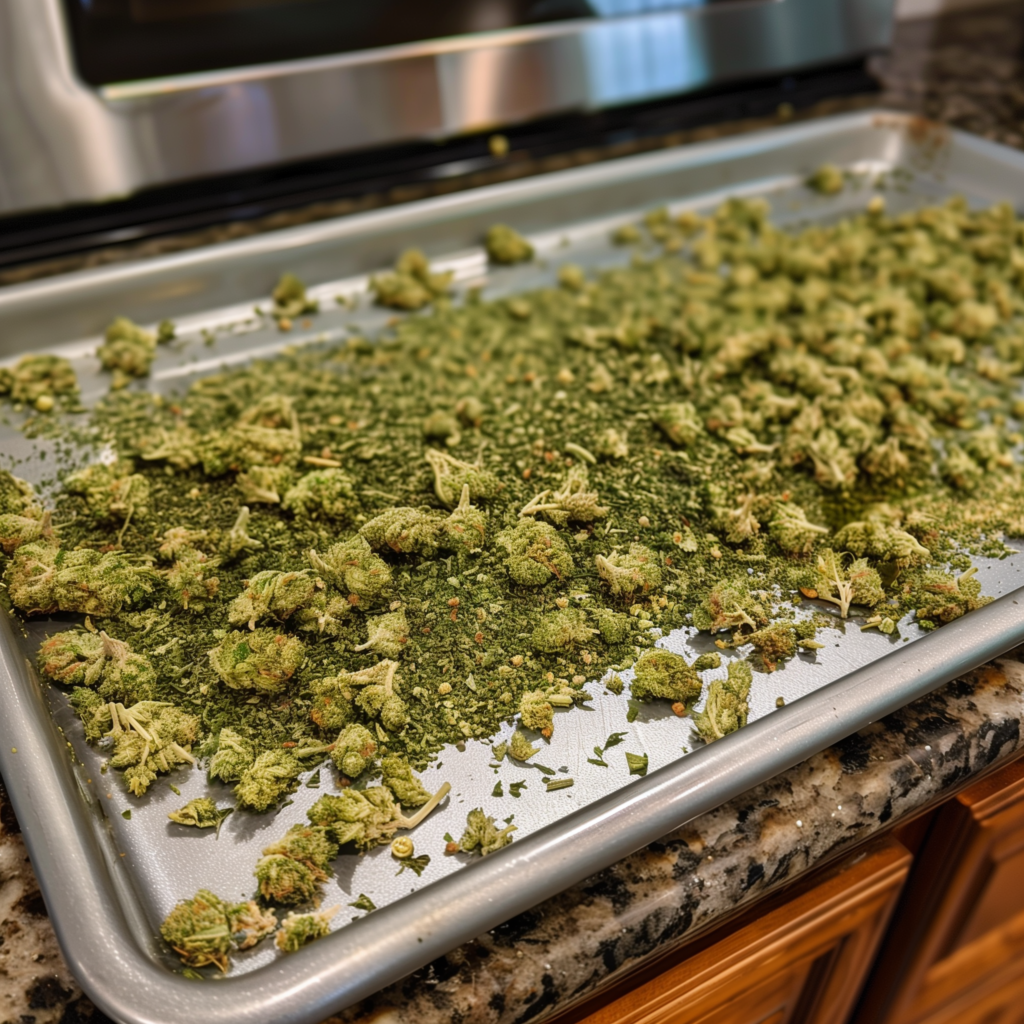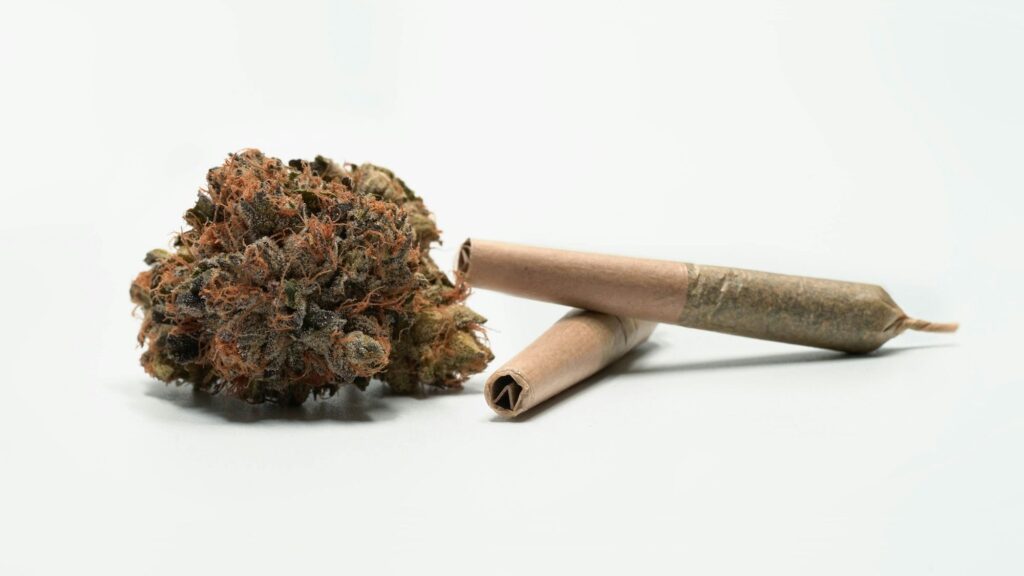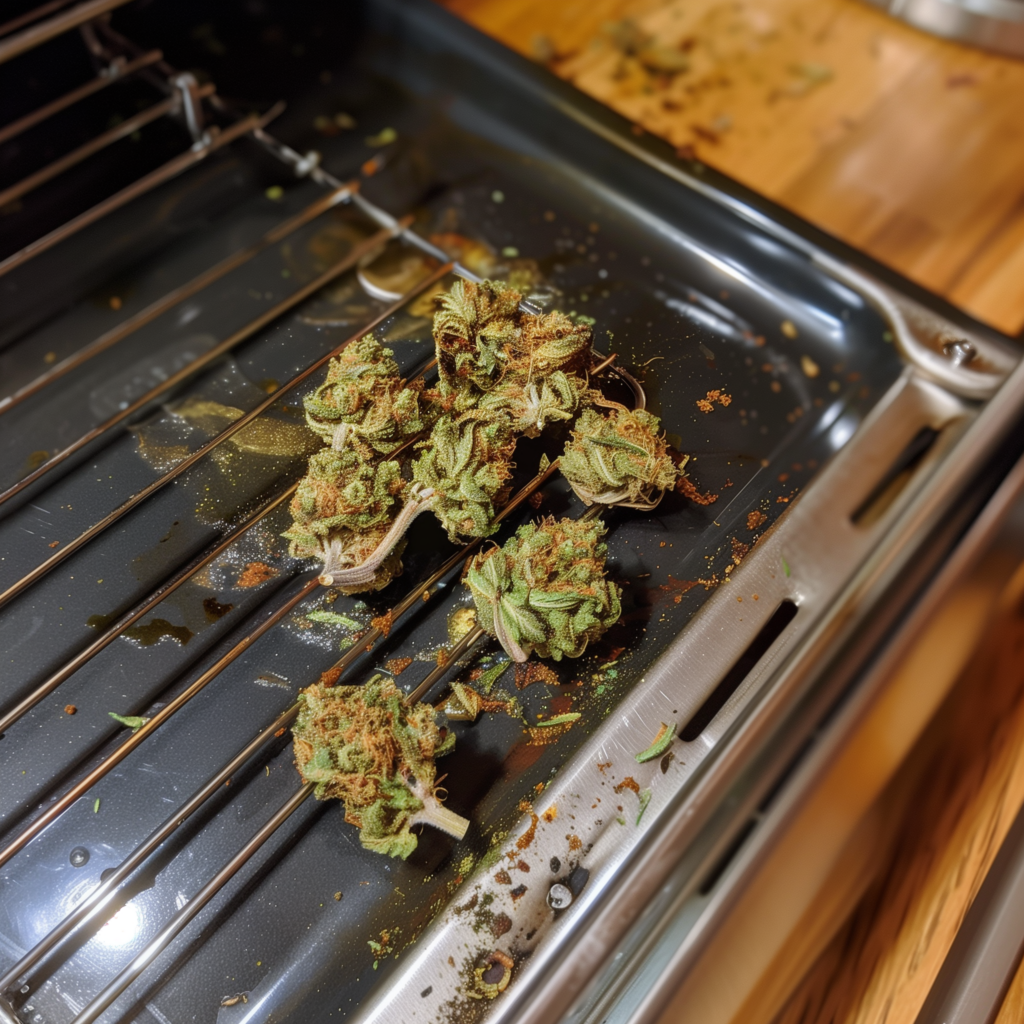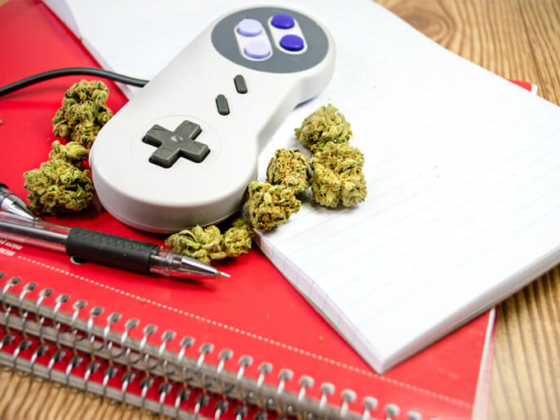What is Decarboxylation?
Raw cannabis contains THC-A and CBD-A, which are not psychoactive. Through decarboxylation, these compounds lose a carbon dioxide molecule and are transformed into the psychoactive THC and therapeutic CBD that provide the effects users are seeking. Hence, decarboxylation is the process of heating cannabis to activate its psychoactive compounds. This process is essential when making edibles, tinctures, or topicals from cannabis; in this blog we will explain how to decarboxylate cannabis.
If the raw plant material is not decarboxylated first, the edibles will not have the desired potency. The decarboxylation process awakens the compounds in cannabis that induce the plant’s therapeutic and intoxicating effects. Heating cannabis is what makes the compounds bioavailable for human consumption.
Without decarboxylation, cannabis consumption would not produce the euphoric and medicinal effects associated with THC and CBD. The process activates the compounds and is a vital first step when using cannabis for edibles or tinctures.
Decarboxylated cannabis can be used in a variety of ways to harness the activated THC and CBD. For instance, one of the most popular uses for decarbed cannabis is for cooking and baking. The decarbed weed can be added directly to butter or oil to infuse it, and then used to make edibles like brownies, cookies, cakes, and more.
How to Decarboxylate Cannabis?
Decarboxylation or Decarboxylate Cannabis is a critical first step when preparing cannabis for consumption. It activates the compounds in cannabis like THC and CBD so that they can produce the desired effects.
What is decarboxylation exactly? Raw cannabis contains THCA and CBDA, the acidic, non-psychoactive forms of THC and CBD. Applying heat converts THCA and CBDA into their active counterparts by removing a carboxyl group. This process is called decarboxylation or “decarbing.”
Decarbing cannabis is necessary whether you’re making edibles, tinctures, topicals, or other infused products. If you don’t decarb, the cannabis won’t be fully activated and you won’t experience its full effects.

How to Decarb Cannabis:
- Break up cannabis buds into small pieces. This increases surface area for more effective heating.
- Spread the cannabis evenly on a baking sheet. Make sure not to overcrowd.
- Bake at 250°F for 30-45 minutes. Ovens vary so keep an eye on it.
- Cannabis is ready when it’s lightly toasted and dried out. It will be crumbly when pinched.
- For a quicker method, decarb in a sealed mason jar at 240°F for 40 minutes.
- Let cannabis cool before using for infusions. Store in an airtight container.
Getting the right decarb time ensures you activate as much THC and CBD as possible. While exact times vary between ovens, aim for 30-45 minutes. Going beyond 45 minutes risks degrading the cannabinoids.
Decarboxylate Cannabis is the first critical step in preparing optimized cannabis edibles and infusions. Always decarb your cannabis properly before proceeding with recipes.

The picture is for your imagination!
Why Decarb Cannabis?
Decarboxylation activates the psychoactive compounds in cannabis like THC and CBD. In raw cannabis, these compounds exist in their acid forms – THCA and CBDA. Through heat and drying, the acid group is removed, converting THCA into THC. This process transforms the compounds into their active forms that provide effects when consumed.
Decarbing cannabis is essential for experiencing its full medical and recreational benefits. THCA and CBDA don’t produce significant effects on their own. Decarboxylating converts them into THC and CBD which can provide relief for conditions like chronic pain, anxiety, insomnia, appetite loss, inflammation, seizures, and more. The decarbed compounds interact with the body’s endocannabinoid system to generate these therapeutic effects.
So Decarboxylate Cannabis unlocks the full potential of cannabis by making its active compounds bioavailable for absorption when ingested. This allows you to benefit from its psychoactive properties as well as its medicinal effects.
Decarbing cannabis is essential for experiencing its full medical and recreational benefits.

Decarboxylation Methods
Decarboxylation can be done using various methods, with the most common being oven, slow cooker, and sous vide.
Oven Decarboxylation
Oven decarboxylation is one of the most popular methods. As we explained above, pre-heat your oven to 240°F. Spread your cannabis evenly on a baking sheet and bake for 40-60 minutes. Stir occasionally to ensure even decarbing. Monitor closely near the end to avoid overheating.
Slow Cooker Decarboxylate
Using a slow cooker is a low and slow decarb option. Add your cannabis to the slow cooker, set to 200°F, and cook for 4-6 hours, stirring occasionally. Make sure the lid is on to retain heat and moisture. Slow cookers maintain a consistent low temperature over time.
The low indirect heat ensures the THC gets activated slowly and evenly. This gentle process helps preserve terpenes too. Slow cooker decarboxylation provides an affordable hands-off method with little risk of burning.
Sous Vide Decarboxylate
Sous vide involves vacuum sealing cannabis and immersing it in temperature controlled water. Sous vide lets you decarb at lower temperatures over longer periods of time, which preserves terpenes. Besides, this method with its precise temperature control leads to consistent decarboxylation every time and prevent overheating.
Set your sous vide machine to 203°F and cook for 60-90 minutes. Sous vide allows precise temperature control for even decarbing without drying out your cannabis. Make sure your bags are properly sealed.
How to Know When It’s Done
You’ll know your cannabis is fully decarboxylated when you observe some key changes in color, texture, and smell.
Color
The cannabis will transition from a green, leafy material to a brown, dried plant matter. The chlorophyll will break down during decarboxylation, causing the green color to fade. Expect the cannabis to take on a light to medium brown color when finished. Dark brown likely indicates over-heating.

Texture
Along with the color change, the texture will also transform from moist and dense to dry and crumbly. Properly decarboxylated cannabis can be crumbled into a fine powder. If any moist clumps remain, continue decarbing.
Smell
The terpenes and other aromatic compounds will become more pronounced as decarboxylation releases them. You’ll notice a strong, pungent cannabis smell once decarboxylation is complete. The aroma is often described as spicy or peppery. If the smell is still mild and herbal, it needs more time to decarb fully.
Common Mistakes
Decarboxylating cannabis properly can be tricky. It’s easy to make mistakes that reduce potency. Here are some of the most common errors:
Too High Heat
It’s tempting to decarb cannabis at very high temperatures to speed up the process. However, heating above 300°F can destroy terpenes and cannabinoids. Use a lower temperature like 230-290°F to preserve potency. Going above 300°F risks burning the cannabis.

A burnt cannabis.
Not Long Enough
Another mistake is not decarboxylating for long enough. It takes time for the chemical reactions to occur. Depending on your decarb method, you may need 30-60 minutes or longer. Don’t cut the time short just to rush it.
Clumping
When decarbing cannabis in the oven, it’s important to spread it out evenly. Clumping it together can lead to uneven decarboxylation, with some parts burning while others remain under-processed. Make sure your cannabis is spread thinly and stirred periodically for consistent results.
Conclusion
In conclusion, decarboxylation is a critical process for unlocking the full potential of the cannabis plant. By converting non-psychoactive compounds into their active forms, decarboxylation allows for a more potent and effective use of cannabis.
Whether you choose to decarb in the oven, a slow cooker, or a sous vide machine, the key is to manage heat and time carefully to ensure the maximum conversion of THC and CBD. Remember, the process of decarboxylation is an essential first step for anyone looking to create their own edibles, tinctures, or topicals at home.




